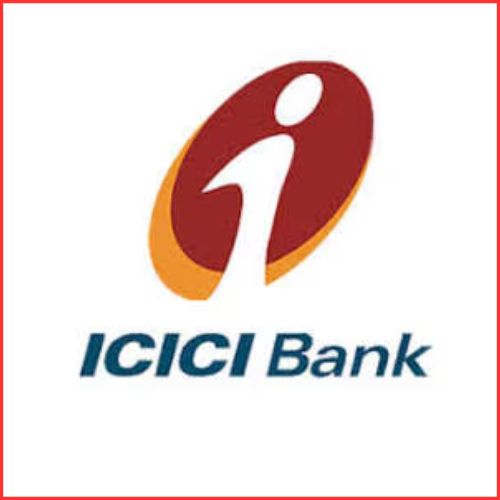FINTECH, short for financial innovation, has turned into an indispensable piece of the overall economy. All money-related errands were finished through work exclusively, as a paper-based medium was pondered to be the most secure. Regardless, with the advent of innovation, the internet has emerged as the most popular stage for monetary exchanges. It’s essentially a related financial business made out of partnerships that utilize innovation to make financial administrations a ton more affordable. FINTECHs are involved mostly by individuals to aid versatile installments, protection, cryptographic money and blockchain innovation, stock business, computerized advancing and credit, planning, and for a ton of.
Fintech, short for monetary development, has transformed into a basic piece of the general economy., all cash-related tasks were done through work only, as a paper-based medium was considered to be the most solid.
Regardless, with the event of advancement, the net has emerged because of the most famous stage for cash-related trades. it’s in a general sense a connected monetary business made from associations that usage advancement to make monetary organizations a huge load judicious. FINTECHs are involved basically by people to help flexible portions, assurance, cryptographic cash, and blockchain development, stock exchange, progressed progressing and credit, arranging, and for a huge load of.
Tech-focused new organizations and near new market members locale unit disturbing the means during which the cash-related organizations business drives its exercises.
List of Fintech Startups in India
• Paytm
• Razorpay
• Upstox
• Cred
• ETMoney
• Instamojo
• PolicyBazaar
• MobiKwik
• ZestMoney
• Lendingkart
• Refrens
• Pine Labs
• MoneyTap
• Khatabook
• Capital Float
• Shiksha Finance
• Amigobulls
• KredX
•CreditMantri
1. Paytm
Paytm was supported in 2010 and is India’s largest payment company that gives shoppers multi-source and multi-destination payment solutions. they permit shoppers to create payments from any checking account to the other checking account freed from value, i.e., 1/3 fee charges. Over eight million merchants have availed of its comprehensive payment solutions. Paytm was supported by Vijay Shekhar Sharma and is in hand by One97 Communications and is commissioned by run batted in. The Paytm app permits users to buy each physical and digital merchandise, and conjointly get DTH plans, bill payments, and mobile recharges. the corporate partnered with Alibaba’s cloud computing arm – ‘AliCloud’ to expand its payment network on a world scale. they need investors like Berkshire Hathaway, SoftBank cluster, and associated MediaTek and even raised a covert quantity from switch Tata in March 2015. it’s arguably the largest fintech company in Asian countries.
How to use Paytm:
1. Produce Paytm account mistreatment of your mobile range and email ID.
2. you’ll be able to add cash to your ‘Paytm Wallet’ via three alternates – net banking, debit card, or MasterCard
3. you’ll be able to transfer cash to some other person by choosing the ‘pay or send’ choice.
4. you’ll be able to create payments to different people or bank accounts on Paytm by scanning a QR code.
5. You’ll be able to conjointly send cash to different Paytm users via their telephone numbers.
2. Razorpay
Founded in the urban center, Razorpay focuses on the payment desires of startups and enterprises. With Razorpay, merchants will simply settle for, process, and pay cash to and from their dealers. it absolutely was supported in 2014 by Harshil Mathur and Shashank Kumar. Thousands of purchasers use its service because it permits a web business to simply accept, process, and distribute digital payment through varied modes like positive identification, MasterCard, web banking, UPI, and paid digital wallets. it’s one of the largest fintech corporations in the urban centers.
3. Upstox
Upstox provides monetary services like investments in stocks, mutual funds, derivatives, commodities, ETFs, and digital gold. It ensures full transparency in valuation by giving zero brokerage for equity trades and up to agency twenty per order for intraday, commodities, and currencies. The founders, Ravi Kumar, Kavita Subramanian, and Srini Vishwanath formed this concept of creating commerce and finance easier and cheaper and created Upstox for fellow young Indians. The Mumbai-based company is backed by business giants like Tiger international and switch Tata and presently has quite 250 workers and also the fintech is at pains to create commerce a won’t for its users.
4. Cred
Cred is an associate initiative of Kunal Shah, the founding father of FreeCharge. The app aims to create paying Mastercard bills easier and rewards you for paying them on time. The app asks for your telephone number to ascertain your credit score with Cibil, CRIF, and Experian. it’s an associate future fintech startup in an Asian country that we’ll positively keep an eye fixed out for.
5. ETMoney
ETMoney could be a full-stack investment platform with a good variety of products within the domains of investments, credit cards and loans, insurance, and monetary tools. It aims to alter the monetary journey of retail customers. ETMoney was supported by Mukesh Kalra in 2015. a zealous company that indulges in personal finance, has become the primary fintech company in an Asian country to introduce Aadhar based mostly on SIP payments. With quite one hundred large integer bank accounts coupled to Aadhar, the fintech plans to alter installment payments with Aadhar OTP verifications. the corporate has conjointly partnered with Google to get a simplified thanks to investing in Mutual Funds and National Pension System.
6. Instamojo
Sampad adult male, Akash Gehani and Hindu deity Sengupta co-founded Instamojo in Sept 2012. Instamojo started as an answer supplier of digital payments that currently has increasingly fully grown into a strong on-line platform for enterprises like small, small, and medium in order that they begin, manage, and grow their businesses on-line. MojoCapital from Instamojo helps disperse bite-sized short-run credit loans that area unit price in and around $2 million. MojoCapital caters primarily to its merchants on a monthly basis, and it’s shown the projected growth of twenty fifth on the month on month basis.
7. PolicyBazaar
PolicyBazaar is a web insurance soul for comparative analysis of product that area unit offered by varied insurers mistreatment parameters like value, quality, and key advantages. It helps users compare insurance policies and assists them in choosing the most effective or the foremost relevant policy that may be purchased on-line or offline. PolicyBazaar was supported by Yashish Dahiya, Alok Bansal, and Avaneesh Nirjar in June 2008 in Gurugram. they’re one in all several fintech startups to arise in Gurgaon. they need raised over $650 million as of 2020. the web platform began as a price-comparison web site associated with an info portal for learning concerning insurance and connected programs; it then enlarged to become a marketplace for insurance policies.
PolicyBazaar has bound with insurance brokers that helps it procure info like value, benefit, insurance cowl, etc. directly from the insurers for the client to match. they are doing not charge something from the client for its service.
8. ZestMoney
Do you wish to shop for one thing offline on EMI however don’t own a credit card? Zest cash includes a ‘buy currently, pay later’ policy Associate in Nursingd offers an EMI possibility that you just will use to buy things on-line or offline from its partner merchants. it’s another Bangalore-based startup supported by Lizzie Chapman, Ashish Anantharaman, and Priya Sharma.
9. Lendingkart
Lendingkart is an internet finance company supported by Harshvardhan Lunia and Mukul Sachan in 2014. Lendingkart provides loans for capital wants for SMEs (small and medium-sized enterprises); these loans area unit fast and collateral-free with borderline work. they’re primarily a loaning fintech company in Asian nation.
Lendingkart has access to a large quantity of knowledge from data partners spread across the country. it’s one of all few loaning fintech corporations in the Asian nations. These information partners offer Lendingkart various info regarding the vendor: instructional qualification, family background, reputation, fight within the market, etc.
How will Lendingkart work?
1. Lendingkart will sell through referrals, print releases, and news releases.
2. SMEs or vendors visit Lendingkart’s website to use for the loan.
3. they have to produce complete info and transfer relevant documents.
4. Once the documents area unit is verified, the analytics team at Lendingkart generates 2 codes through machine learning systems.
5. supported those codes, a call to produce the loan or not is generated and also the quantity is set if the loan is approved.
The best half regarding the complete method is that it simply takes four hours. A bank typically wants weeks and months for a constant method.
10. Refrens
Refrens is fairly unaccustomed to the FINTECH world in the Asian nation. it had been supported by Naman Sarawagi and Mohit religion in 2019. Refrens provides a payment entry system for freelancers to send and receive payments swimmingly. It offers free invoicing, payments, and an expense management system. For freelancers, it becomes simple to modify choices like adding payment strategies, providing discounts, etc. for his or her shoppers. it’s really easy to use it’s attainable to make an Associate in the Nursing invoice in only thirty seconds.
11. Pine Labs
Pine Labs may be a Gurugram-based fintech platform that has PoS (Point of Sale) software system solutions for offline retailers and makes. it had been supported in 1998 by Lokvir Kapoor, Rajul Garg, and Tarun Upadhyay. They at the start offered a sensible card-based payment and loyalty resolution for the fossil fuel sector. It then introduced a PoS machine for offline merchants. Its ‘Plutus PoS’ resolution may be a cloud-based software system that may be integrated with a generic POS terminal to permit retailers to just accept debit and credit cards, e-wallets, QR codes, and UPI-based payments. Pine Labs’ offerings embody selling tools, news and analytics, payment entry API solutions, mobile payment resolution (via myPlutus), loyalty and gift card programs, added solutions like EMIs, discounts, pay by points, loyalty solutions, e-wallets et al. The mobile app of Pine Labs is accessible on robot and iOS and might be used for targeted promotions, dynamic currency conversion and a lot of. In 2017, Pine Labs launched its complete suite of services in Southeast Asian markets; it’s gift in Asian nation.
12. MoneyTap
MoneyTap is India’s 1st app-based credit line. It provides you credit and you’ll repay your credit quantity in versatile EMIs of two to thirty six months. MoneyTap aims to form credit accessible to the Indians WHO use web banking. It uses customers’ details to judge the user’s eligibility and judge the credit limit. MoneyTap was launched in 2015 by Bala Parthasarathy, Kunal Verma, and Anuj Kacker.
13. Khatabook
Founded in October 2018, by Ashish Sonone, Dhanesh Kumar, Vaibhav Kalpe, Jaideep Poonia, and Ravish Naresh, Khatabook is that the world’s fastest-growing SaaS company. it’s become India’s leading business management app for MSMEs with 20M+ downloads in an exceedingly remarkably short amount of your time. This Bangalore-based mobile app service shares WhatsApp and SMS reminders to users once cash is thanks to be paid or collected. Khatabook permits small, tiny and medium merchants to trace business transactions safely and firmly.
14. Capital Float
Capital Float may be a Bangalore-based digital nondepository financial institution supported by Sashank Rishyasringa and Gaurav Hinduja that has capital loans and term loans to tiny businesses via a technology-led loan origination and credit underwriting platform. Capital Float offers loans starting from INR one lakh–INR one large integer with terms between one – twelve months. The offered loans area unit supported money flows, expected assets, financials, CIBIL score, and bank statements. people will apply on-line for the loan and once the loan is approved, it’s disbursed to their checking account. If you have got orders from well-reputed company customers, you’ll borrow up to eightieth of the worth of an impressive invoice, and repay solely when you receive payment from your client. the corporate has partnered with startups like Shopclues, Paytm, and Uber.
15. Shiksha Finance
Many people have the potential to become nice students however the unconscionable tuition fees of instructional establishments hinder them from following education. Shiksha Finance provides short-run loans to students for his or her fees. The loan ranges from INR ten,000-INR 30,050 and should be paid between 6-10 months. For a personal faculty or school, the loan will vary from INR one lakh-INR seventy three.5 large integers and might be paid among vi months five|to five} years. it had been supported by Jacob Abraham in 2014.
16. Amigobulls
Founded by Chandu Sohoni and Poorna Nayak in 2013, Amigobulls provides resolution to wealth management-related issues. you’ll get the daily stock analysis within the sort of short, personalised videos. The personalised videos area unit created mechanically mistreatment Amigobulls’ technology; thousands of videos will be created in an exceedingly few minutes! This fintech company offers investment recommendation and news to exchange investors through a patent-pending video generation technology.
17. KredX
KredX is India’s first invoice discounting marketplace platform. It helps businesses gain quick access to working capital in around 24 to 72 hours by selling their unpaid receivables while providing investors with an opportunity to earn low-risk high returns through a unique short-term investment. Founded by Anurag Jain, the company provides a technological platform that connects investors, both institutional and individual, with high-growth businesses looking for working capital through invoice discounting. KredX’s objective is to facilitate short-term working capital to the SMEs raised against blue-chip companies to a network of financiers. KredX’s recent acquisition of Hummingbill, a New York based startup – to strengthen technological capability has assisted the former to progress its growth curve in the lending space.
How does KredX work?
1. SMEs have to submit certain documents. KredX checks on the credit health of the SME through the latter’s balance sheets, etc.
2. Physical verification is performed where the KredX team checks on the office and credentials provided by the company.
3. KredX calculates the risk involved using the invoices uploaded by the SME. It then relays this information to the financiers of the ecosystem.
18. CreditMantri
Founded by Ranjit Punja, Gowri Mukherjee and Rajasundaram Sudarshan in 2011, Credit Mantri is a credit facilitator which uses data and technology to help people make better financial decisions. It provides an Equifax credit score that is one of the four credit bureaus authorized in India by the RBI. Anyone who needs credit can create a credit profile on CreditMantri’s website to apply for loans and credit card offers based on his or her credit profile. The Equifax score is used by CreditMantri to analyse the individual’s credit profile.
Frequently Asked Questions- FAQ on FINTECHs in India
Q. What is FinTech Company India?
A. Financial technology is abbreviated to FinTech and it comprises of companies that use technology to offer financial services. It has emerged as a relatively new industry in India.
Q. What are examples of FinTech?
A.Some examples of FinTech are mobile banking, mobile payments, trading, cryptocurrency, insurance, trading, and lending to name a few.
Q. What are some Fintech companies in India?
A. Some Fintech companies in India are:
• Paytm
• Razorpay
• Upstox
• Cred
• ETMoney
• Instamojo
• PolicyBazaar
• MobiKwik
• ZestMoney
• Lendingkart
• Refrens
• Pine Labs
• MoneyTap
• Khatabook
• Capital Float
• Shiksha Finance
• Amigobulls
• KredX
• CreditMantri
Q. Can fintech startups disrupt the financial system in India?
A. Fintech opportunities are a result of
- solving for big & small consumer pains,
- significantly adding value to a basic proposition or
- develop a new market which was earlier not possible.
India offers abundant opportunities on all counts. Some consumer pains that require solutions include slow disbursal of loans (HDFC Bank 10-second personal loan), difficulties in investing in direct mutual funds, paying utilities online (PayTM), overpaying for car insurance (Policybazaar), confusing tax laws (Taxspanner), analyzing your private expenses (Smartspends), transferring money quickly (Pockets), entering OTP towards payment authentication (PayU One Tap), etc. Fintech companies also offer significant value to existing structures. Simple.com makes banking more consumer focussed by removing charges and helps you save for your goals. At current count, there are over 2,000 P2P lending firms in China widening the loanee user base. CIBIL can give way to more evolved analytical engines to determine a user’s creditworthiness using social information, expense patterns, career prospects, etc.
Q. What is the future of Fintech startups in India?

A. FinTech is the fusion of financial services and technology. It is not a new phenomenon and rather has a long history as described by Amer et al. in three ages:
FinTech 1.0 (1866-1967): from the laying of the first transatlantic cable to the invention of the ATM when the telegraph supported financial interlinkages across borders, allowing rapid transmission of financial information, transactions, and payments.
FinTech 2.0 (1967-2008): FinTech remained internal to the sector and was dominated primarily by the traditional regulated financial services industry that used technology to provide financial products and services. This era witnessed the launch of electronic payments and clearing systems, ATMs and online banking. Since the mid-1990s, the financial services industry has been the single largest purchaser of IT.
FinTech 3.0 (2008-present): since the global financial crisis, established technology companies and new disruptive start-ups are reimagining how financial services can be delivered using cutting edge technology. They have begun to deliver financial products and services directly to businesses and the general public, whereas new entrants tend to focus on a single-purpose solution, designed to offer an improved user experience through specific products.
Let’s take a peak in India now. Fintech started evolving in India post-1990, with the liberalization of banks. Gradually, there was a push for technologies such as MICR, electronic transfers and other e-payments. However, technology adoption was slow. This created room for FinTech startups to fill the gap. 2005-2013 saw startups such as Oxigen, Mobikwik, Paytm and Freecharge enter to help move the economy towards electronic payments. Innovations in FinTech were held back by regulatory uncertainties and a conservative approach on the part of incumbent financial institutions and the government. Of late, however, regulations have been accommodative.
Within the FinTech 3.0 era, we now have at least 3 distinct, if interdependent, spheres of application. Government’s pro-startup policies and flexible regulatory conditions imposed by the Reserve Bank of India (RBI) are helping all these spheres in many ways. The government should now also work on a strong and responsive regulatory infrastructure to keep pace with the speed of technological innovation:
In the sphere of the system: where banks and other financial institutions utilize technology to upgrade and update corporate systems and processes, either internally, or as participants in a consortium (e.g. NPCI). In the last five years, India has built a robust infrastructure for incubation and growth of FinTech. India Stack, which comprises JAM (Jan Dhan, Aadhaar & Mobile) Trinity combined with e-sign & digital locker, has been a major boost for FinTechs to build their businesses. This combined with the Payment Stack which includes initiatives such as Aadhaar Enabled Payment System (AEPS), Unified Payment Interface (UPI), India Quick Response (QR), Immediate Payment Service (IMPS), National Automated Clearing House (NACH), Bharat Bill Pay (BBPS) & USSD – makes one of the largest interoperable payment ecosystems in the world. After the rollout of GST, businesses especially SMEs have increased digital adoption. This is further facilitating FinTechs to offer fast and easy loans to SMEs. India’s own Blockchain network – Indiachain is being developed by NITI Aayog. This will speed up contract enforcement, minimize fraud, and increase transparency while bringing higher efficiency and precision in operations.

In the B2B sphere: where a bank is the client, backer, or partner of a FinTech enterprise – purchasing, investing in, or co-developing FinTech products in order to modernize its existing customer-facing services or to offer new ones. About a decade back, Payment Gateways were developed to facilitate -commerce payments which have evolved over time. Many banks are now making their Application Program Interfaces (APIs) available for integration to FinTechs. A number of banks have launched mobile phone applications to ease digital transactions. Banks are also working with FinTechs in areas like insurance, Robo-advisory, alternate and flow-based lending, customer experience solution, and interactive solutions like chatbots. Many banks including Kotak and UK giant Barclays are setting up innovation labs to partner with various FinTech firms to jointly develop Proof of Concept (POC) & roll out products.
In the B2C sphere: Digital financial services allow financial systems to perform their core functions of providing access to liquidity and managing risk at scale. They help lower transaction costs and deliver at the point and time the services are most needed. While the financial services-technology pairing can be powerful, the secret in creating value for all stakeholders is building the business around the customer, i.e. being customer-centric. Therefore major challenges for India lie here. The key ones are:
Enabling access to financial services: Now internet on mobile has become much cheaper allowing every person to use apps conveniently for transactions. The turnaround time has become much faster for the delivery of financial services thanks to digitization and automation. RBI has granted licenses to many FinTech entities to establish payment banks that provide savings, deposit, and remittance services. These payment banks are expected to use the benefits of their low operational cost to reach out to more customers with better offers. Companies focused on data analytics and machine learning algorithms are mining data across credit, call records, social media, merchant transaction, spends and financial aggregators, and leveraging this across business models to provide better access to insurance and credit, even for the under-banked rural & semi-urban dwellers, low-income earners, people in the informal sector and people without a credit history. Such companies are also able to manage risks and use their assets more productively. To maintain robustness and validity of such models requires more and more updated data and the technical skills to mine these data for insights. Hence, penetration of technology like smartphone and availability of skilled personnel are challenges faced in this front.
Shifting from cash to e-money: Banking is becoming a non-physical consumer experience – interactions with providers are shifting to online channels. FinTechs are offering all kinds of financial services through their apps or websites such as money transfer, loans, insurance, managing investments in mutual funds, financial markets or even peer-to-peer (P2P) lending. Transactions are shifting to e-money or e-wallets. Card details can now be saved in smartphones with Google Pay or Samsung pay and payments can be done through Near Field Communication (NFC) technology by just bringing your phone near a PoS system. While cash still accounts for substantial consumer transactions in India, the total value of cash-free transactions has been increasing. The demonetization of high denomination banknotes in 2016 had sparked an unprecedented growth in the use of mobile wallets. However, FinTech startups need to instill greater confidence among Indian customers, already known for being conservative in their financial preferences. Figuring out how to market to their needs and influence payment/transaction behavior are some of the biggest challenges here.
Consumers’ own awareness of their financial behaviors, wellbeing, and opportunities: Personal financial management apps are becoming a reality. They track and analyze investments, incomings, outgoings, and even expenditures. These services typically consolidate data from across all of a user’s account providers in one place, visualizing it in a dashboard. The apps function as a personal financial adviser and utilize user data to provide insights, plans, and prompt using AI and ML to help the user budget and invest better, ensure bills are paid, and achieve financial goals. They may also have chatbots to execute errands and act as aggregators offering a range of financial products on a single platform. However, assets managed by such platforms are still very low. Influencing financial behavior of customers and offering personalized customer experience are major challenges here.
The Indian Fintech market is forecast to touch USD 2.4 Bn by 2020, up from USD 1.2 Bn in 2016.
Fintech Startups In India: Conclusion ( Economic Impact of Fintech and Digital Finance)
USD 700 Bn boost to GDP by 2025
USD 800 Bn new deposits and USD 600 Bn new credit
21 Mn new jobs
Let’s take a look at the funding scenario in the FinTech industry in India until last year. India offers the highest expected RoI in FinTech at 29% vs the global average of 20%.
In 2017, India’s digital payments start-up Paytm received $1.4 Bn in venture capital, helping drive FinTech fundraising activity to nearly five times the 2016 levels. The number of FinTech deals in India increased 65% over 2016. This was largely spurred by the RBI’s demonetization initiative geared to combat corruption by banning high-value banknotes, which prompted millions to shift to mobile payments and other cashless service providers such as PayTM.
Investments in Lending and Insurance startups were a recurrent theme in 2018. No wonder, then, that India’s lending startups raised $953.03 Mn, almost half of the total funding raised by the Indian FinTech ecosystem as of Nov 2018. FinTech startups accounted for 99 of the 660 deals made this year. It accounted for $1.60 Bn of the total equity funding raised ($9.14 Bn). Activity in the early stage gained momentum with the number of deals in the Pre-Series A space rising 10% but the total deal value up by 40% to $39.38 Mn.
(Experts Discuss The Past, Present & Future Of FinTech Business In India)
Currently, three Indian FinTech startups are deemed unicorns. First is One97 Communications (operates PayTM) with above $10 Bn valuation and major investors being Intel Capital, Sapphire Ventures and Alibaba Group. Second is PolicyBazaar with above $1 Bn valuation and major investors being Info Edge and Softbank Capital. Not startups in truest sense, but two other FinTech companies that have made headlines are Billdesk ($1.5-2 Bn valuation) and Pine Labs ($900 Mn valuation) for raising money this year.
The top 10 deals by value in FinTech accounted for 60 % of total funding raised, once again reflective of the overall trend – that investors are taking pole positions in companies with a proven track record and the ability to scale. Investment trend over the years has shifted to later stage deals with increase in average deal value and a reduction in the deal volume of early stage deals. This is representative of the sector maturing, however, there are still segments that are in nascence.















